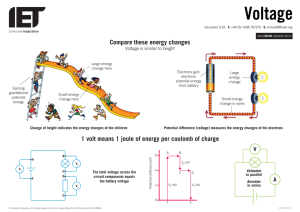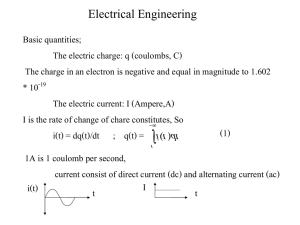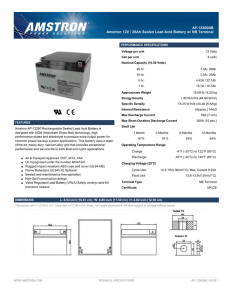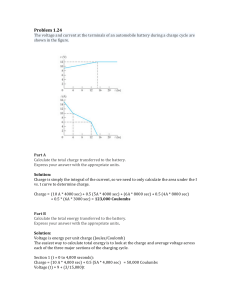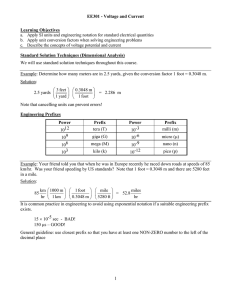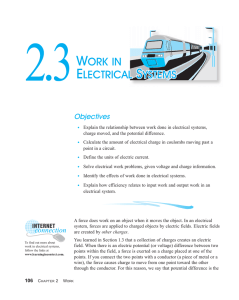Electric Potential Difference (Voltage) Lesson
advertisement
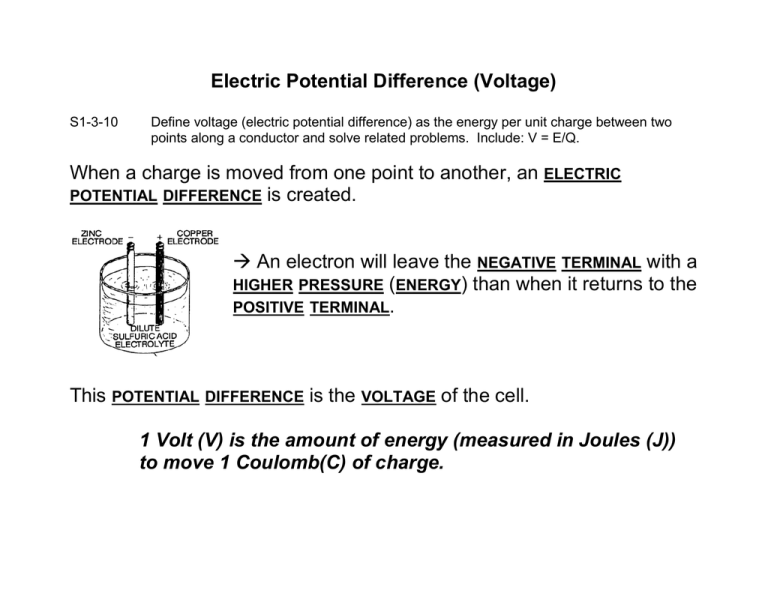
Electric Potential Difference (Voltage) S1-3-10 Define voltage (electric potential difference) as the energy per unit charge between two points along a conductor and solve related problems. Include: V = E/Q. When a charge is moved from one point to another, an ELECTRIC POTENTIAL DIFFERENCE is created. An electron will leave the NEGATIVE TERMINAL with a HIGHER PRESSURE (ENERGY) than when it returns to the POSITIVE TERMINAL. This POTENTIAL DIFFERENCE is the VOLTAGE of the cell. 1 Volt (V) is the amount of energy (measured in Joules (J)) to move 1 Coulomb(C) of charge. The Voltage Equation We just said that voltage is the energy per coulomb, so we get the formula: 𝐸 𝑉= 𝑄 Where V = POTENTIAL DIFFERENCE measured in VOLTS (V) E = ENERGY measured in JOULES (J) Q = CHARGE measured in COULOMBS (C) Voltage Example Problems 1. 300 J of energy is used to move 100 C of charge through a circuit. How much voltage is there? 2. You have a 12 V battery. How much energy is used when you move 6 C? 3. How much charge is used when a 9V battery uses 220J of energy? Try these ones.. 1. How many volts are there if it takes 1000J to move 100 Coulombs? 2. Find the amount of energy if a battery puts out 12V and moves 10C of charge. 3. Determine the amount of charge if a 9V battery has 900J of energy.




